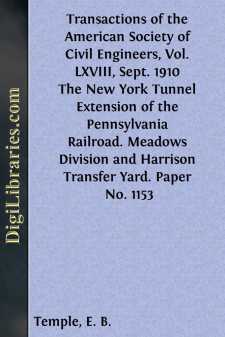Categories
- Antiques & Collectibles 13
- Architecture 36
- Art 48
- Bibles 22
- Biography & Autobiography 813
- Body, Mind & Spirit 142
- Business & Economics 28
- Children's Books 15
- Children's Fiction 12
- Computers 4
- Cooking 94
- Crafts & Hobbies 4
- Drama 346
- Education 46
- Family & Relationships 57
- Fiction 11828
- Games 19
- Gardening 17
- Health & Fitness 34
- History 1377
- House & Home 1
- Humor 147
- Juvenile Fiction 1873
- Juvenile Nonfiction 202
- Language Arts & Disciplines 88
- Law 16
- Literary Collections 686
- Literary Criticism 179
- Mathematics 13
- Medical 41
- Music 40
- Nature 179
- Non-Classifiable 1768
- Performing Arts 7
- Periodicals 1453
- Philosophy 64
- Photography 2
- Poetry 896
- Political Science 203
- Psychology 42
- Reference 154
- Religion 513
- Science 126
- Self-Help 84
- Social Science 81
- Sports & Recreation 34
- Study Aids 3
- Technology & Engineering 59
- Transportation 23
- Travel 463
- True Crime 29
Transactions of the American Society of Civil Engineers, Vol. LXVIII, Sept. 1910 The New York Tunnel Extension of the Pennsylvania Railroad. Meadows Division and Harrison Transfer Yard. Paper No. 1153
by: E. B. Temple
Categories:
Description:
Excerpt
The New York Tunnel Extension of the Pennsylvania Railroad diverges from the New York Division in the Town of Harrison, N. J., and, ascending on a 0.5% grade, crosses over the tracks of the New York Division and the main line of the Delaware, Lackawanna and Western Railroad. Thence it continues, with light undulating grades, across the Hackensack Meadows to a point just east of the Northern Railroad of New Jersey and the New York, Susquehanna and Western Railroad, where it descends to the tunnels under Bergen Hill and the North River. ()
PLATE XVI.—Plan and Profile of the Pennsylvania Tunnel & Terminal R. R., from Harrison, N. J., to the Hudson RiverThat portion of the line lying west of the portals of the Bergen Hill Tunnels has been divided into two sections: First, the most westerly, known as the Harrison Transfer Station and Yard (), which is located on the southern side of the New York Division, Pennsylvania Railroad, and extends from the connection with the New York Division tracks at grade up to the point of crossing the same, where the Pennsylvania Tunnel and Terminal Railroad has its beginning; second, the Meadows Division of the Pennsylvania Tunnel and Terminal Railroad, which is a double-track railroad, 5.08 miles long, extending from a point just west of the bridge over the New York Division to a point 300 ft. west of the western portals of the Bergen Hill Tunnels.
Harrison Transfer Station and Yard.—The necessities for the Harrison improvements are two-fold: First, as a place to change motive power from steam to electric, and vice versa; second, as a transfer for passengers from trains destined to the new Station at Seventh Avenue and 33d Street, New York City, to steam or rapid transit trains destined to the present Jersey City Station, or to the lower part of New York City via the Hudson and Manhattan Tunnels, and vice versa.
All steam trains from Philadelphia, the South, and the West, from New Jersey seashore resorts, and local trains on the New York Division bound for the new Pennsylvania Station, will change their motive power from steam to electric engines at the Harrison Transfer Station. Likewise, all trains from the Tunnel Line will change from electric to steam motive power there, and passengers coming from Jersey City and the southern section of New York City can take through trains at the Harrison Transfer platforms. It is estimated that the time required to make this change of motive power, or to transfer passengers, will not exceed 3-1/2 min.
The plan at Harrison provides at present for two platforms, each 1,100 ft. long and 28 ft. wide, and having ample shelters and waiting rooms, connected by a 12-ft. tunnel under the tracks, provision being made for two additional platforms when necessity requires their construction. The platforms are supported on walls of reinforced concrete, with an overhang to provide a refuge for employees from passing trains. The concrete walls are supported on wooden piles, prevented from spreading by 7/8-in. tie-rods at 10-ft. intervals, and embedded in concrete under the paving of the platform. As the elevation of the top of the platform is +21.83, and the top of the piles is +14.54 above mean tide, the piles will, of course, decay; but, as the embankment has been completed for some time and is well packed and settled, the concrete being deposited directly on the embankment, very little trouble from settlement is anticipated when the piles decay. The surface of the platforms, with the exception of the edges, is to be of brick, on a concrete base; and, if settlement occurs, the bricks can be taken up and re-surfaced....


